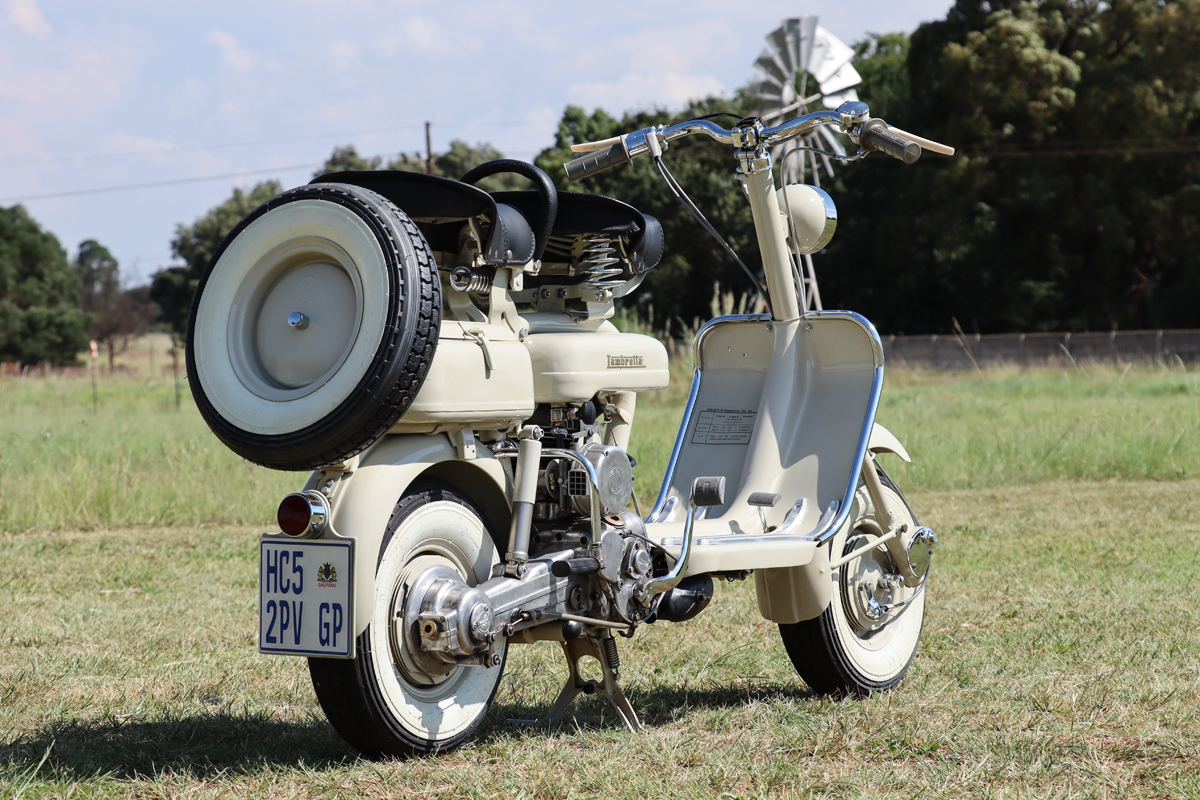
What the hell is a water-sprite you may say? Well, it gave rise to the name of a range of scooters that became a household name both in Italy and then worldwide. But I digress. Let me start at the beginning. Italy emerged from the Second World War in tatters. It was virtually a case of starting all over to rebuild the shattered economy. Infrastructurally the Italian landscape had suffered too. Roads were pockmarked with bomb craters and the rubble of buildings was strewn everywhere. Mobility was a major issue. There was a desperate need for inexpensive utility transport which most folk could afford.
Ferdinando Innocenti of Pescia moved his seamless tube-making business from Rome to Milan in 1931. His factory was virtually bombed out of existence by the Allies trying to hobble the Italian war effort. Innocenti recognised the desperate need for post-war urban mobility, and the Allies, in a roundabout way helped him come up with an idea. Necessity is indeed the mother of invention! US paratroopers and Marines made use of olive-green Cushman scooters, manufactured in Nebraska, to help them deploy rapidly, despite destroyed roads and bridges, upon landing. At the end of hostilities, many of these Cushman pipe scooters were left in Italy.
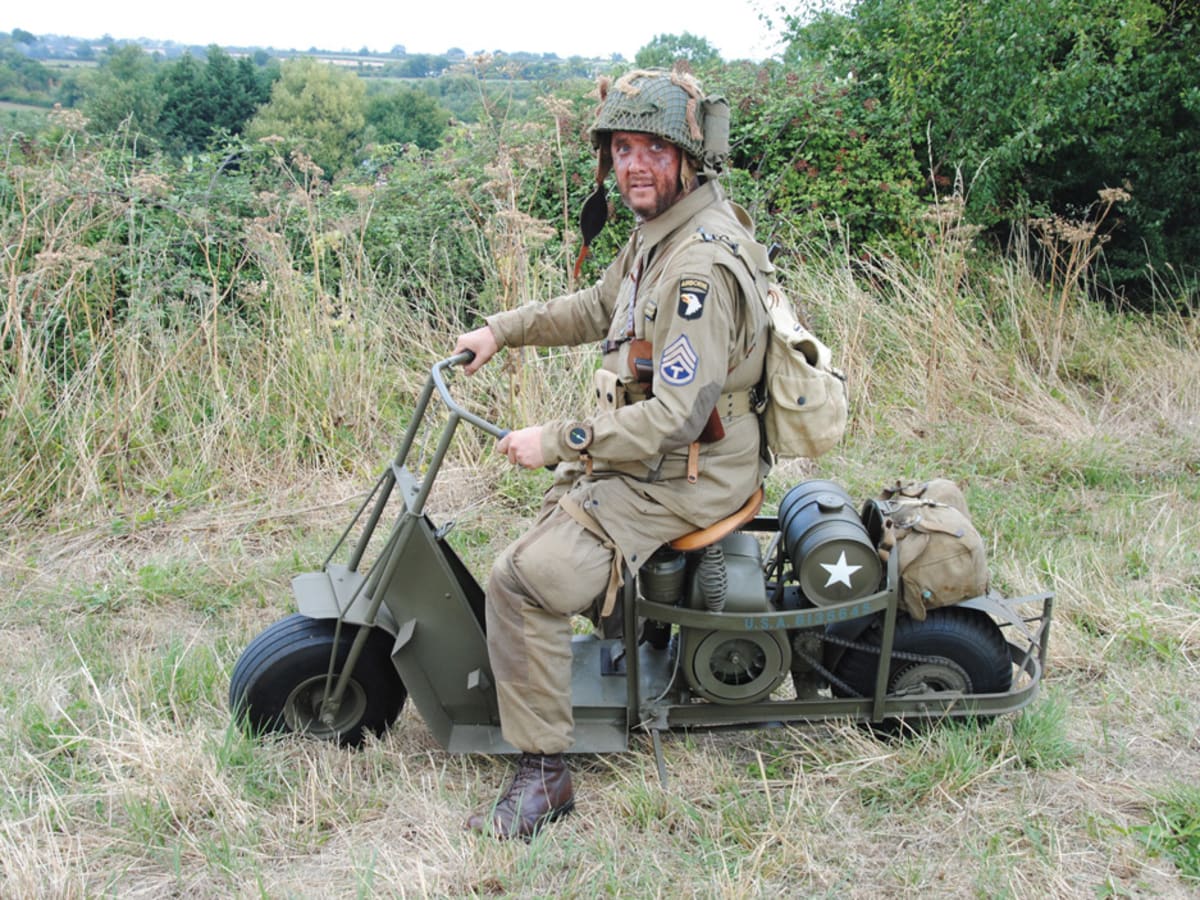
Innocenti enlisted an Aeronautical engineer, Corradino D’Ascanio, the designer of the first Agusta helicopter, to design a robust, simple, and inexpensive vehicle. The brief was ease of use for both men and women, could carry a passenger, and then, typically Italian, not soil the riders’ clothes. D’Ascanio disliked motorcycles and decided that he would do things differently. He came up with a design that mounted the engine directly onto the rear wheel, a spar frame and a shield that would keep road detritus off the rider.
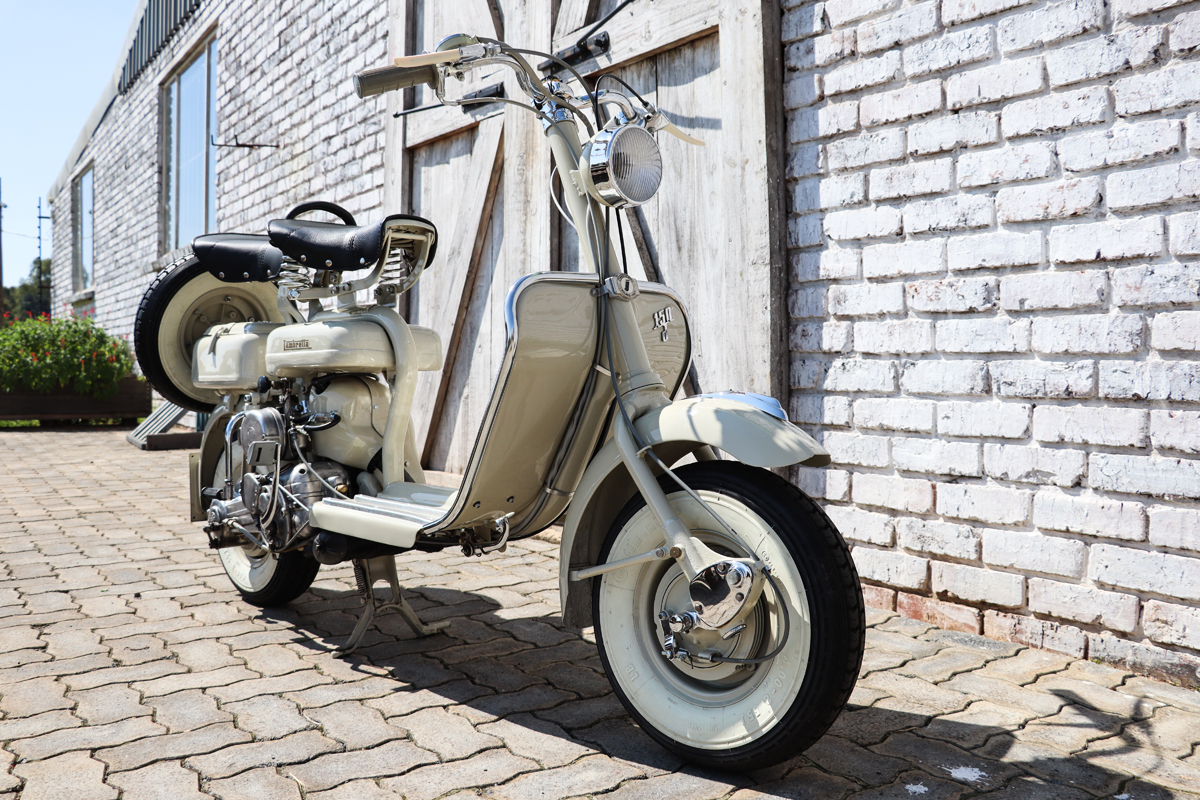
Women could ride the vehicle without their skirts getting caught in the rear wheel, courtesy of its step-through design. Using his aeronautical experience, he made the front suspension reminiscent of aircraft landing gear, with an easy-to-remove wheel. An internal mesh drive to the rear wheel was maintenance-free and clean. Innocenti clashed with D’Ascanio over the frame design. The aircraft man preferred a stamped spar frame, whereas rather predictably, Innocenti wanted to resurrect his original company and use a tubular frame. In a typical fit of Italian pique, D’Ascanio took his design to Enrico Piaggio who put it to good use in his Vespa scooter design in 1946.
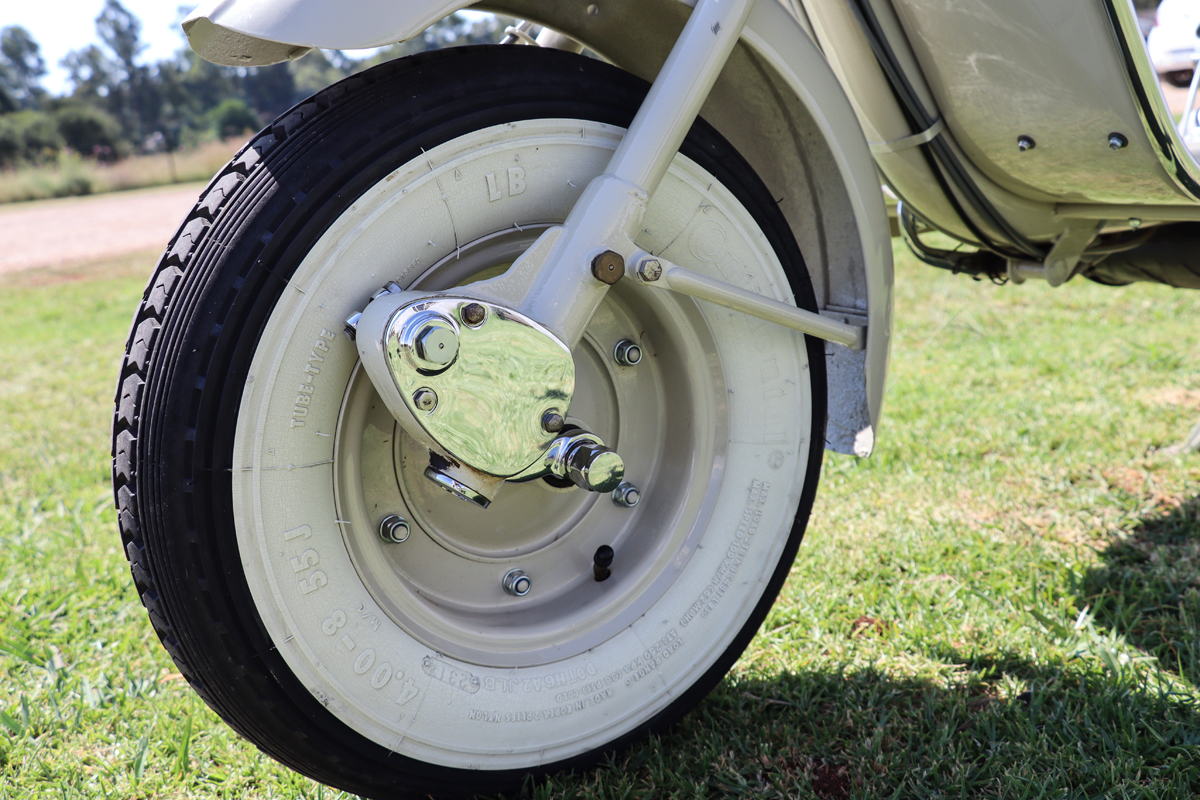
Innocenti finalised the design of his scooter with the help of Cesare Pallavicino and Pier Luigi Torre, both engineers with roots in aircraft construction. Torre designed the engine and set up Innocenti’s factory for mass production. Now they needed a name. The Lambro River, which flows through Milan, ran past the factory and was inhabited, according to local folklore by a water-sprite (a fairy-like mythical creature) named “Lambretta”. The rest, as they say, is history. In 1947, the first Innocenti Lambretta 125s rolled off the production line. The Aero and Cushman influence is clear when you see the end product.

I went a little further. I laid my hands on a Lambretta 150dl from the early fifties. Beautifully restored, right down to the white wall tyres it is a thing of functional beauty. Not too unlike the original 125, it shares many of the original design features. A 3-speed hand shift on the clutch hand, kick start, with a two-stroke 150cc engine. It features a tubular frame with a flat aero-influenced leg shield and foot rear brake. The front brake is not up to much, so the rear brake is literally a lifesaver.
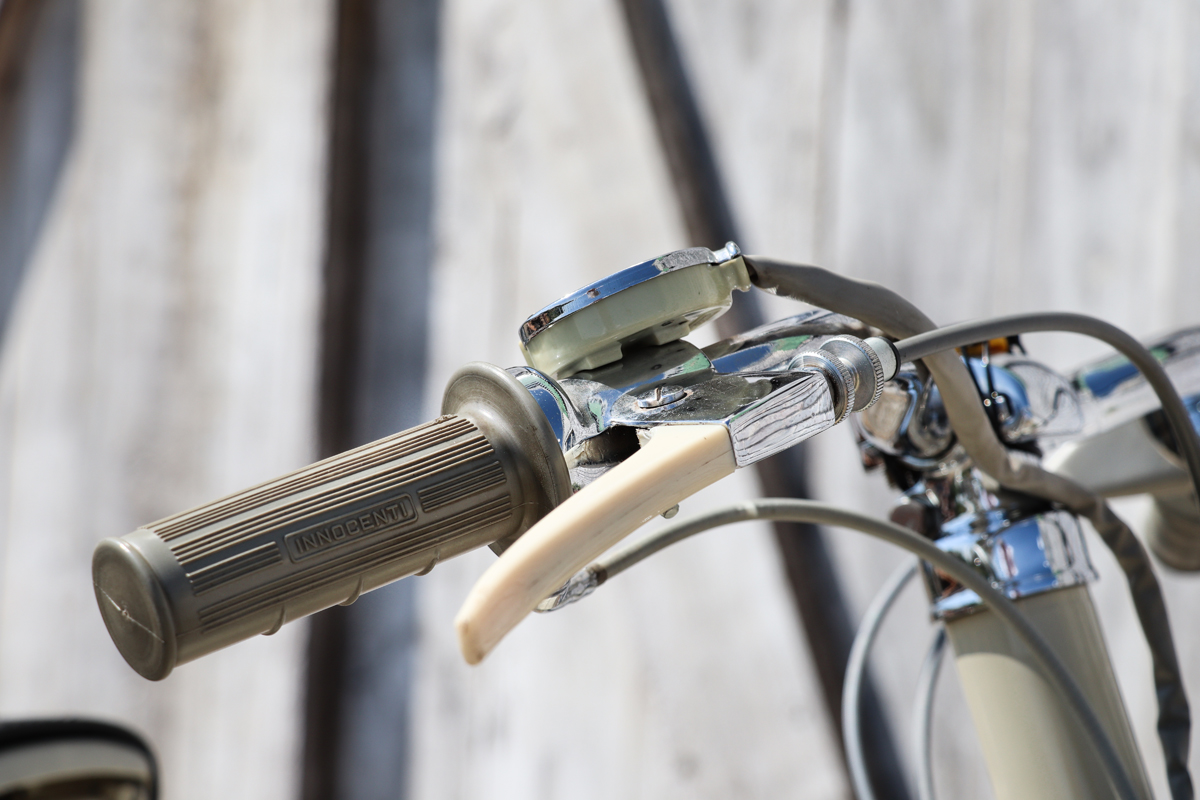
Riding the 150d is like stepping back in time. Open the fuel valve on the under-seat fuel tank and then, with the little scoot on the main stand and in neutral, kick the little stroker into life. It takes a few prods on the forward-facing kickstart before the beastie settles into a sputtering smoky idle. Hop on, push it off the stand, pull the clutch and twist the left handlebar assembly up, thereby engaging first gear and easing out the clutch as you twist the conventionally placed throttle and away you go. When the little mill starts four stroking you hook the next gear until you are in top gear (3rd) and cruising along. There are no gauges, so the speed is utter guesswork. The sprung seat and shock absorbers do a decent job of bump absorption and you kind of get into a rhythm as you putt down the road.

I am not sure how well it will cope with a passenger, but all things considered, it goes amazingly well. I rode it on a 25km round trip to take some photos and thoroughly enjoyed the leap back in time. Savour the photos of this beautiful little scoot. It has elegance and charisma which is somehow lost in modern design. Sort of a Citroen 2 CV or Volkswagen Beetle of the motorcycle world if you get my drift. It throws the crazy, bells and whistles world we live in today into stark relief. Its simplicity is timeless and a far cry from the often-trivial features which adorn modern vehicles to make them more appealing to buyers.
So where am I going with all of this? This stunning little classic belongs to Corrie Moolman, who was so taken with the process of restoring the scooter to its former glory that he started researching Lambretta as a brand. As affluence returned bit by bit to post-war Italy, the focus of families moved to family transport such as Fiat’s little ‘Topolino’, the diminutive 500cc classic. Scooter manufacturers found their markets dwindling and reserves evaporating.
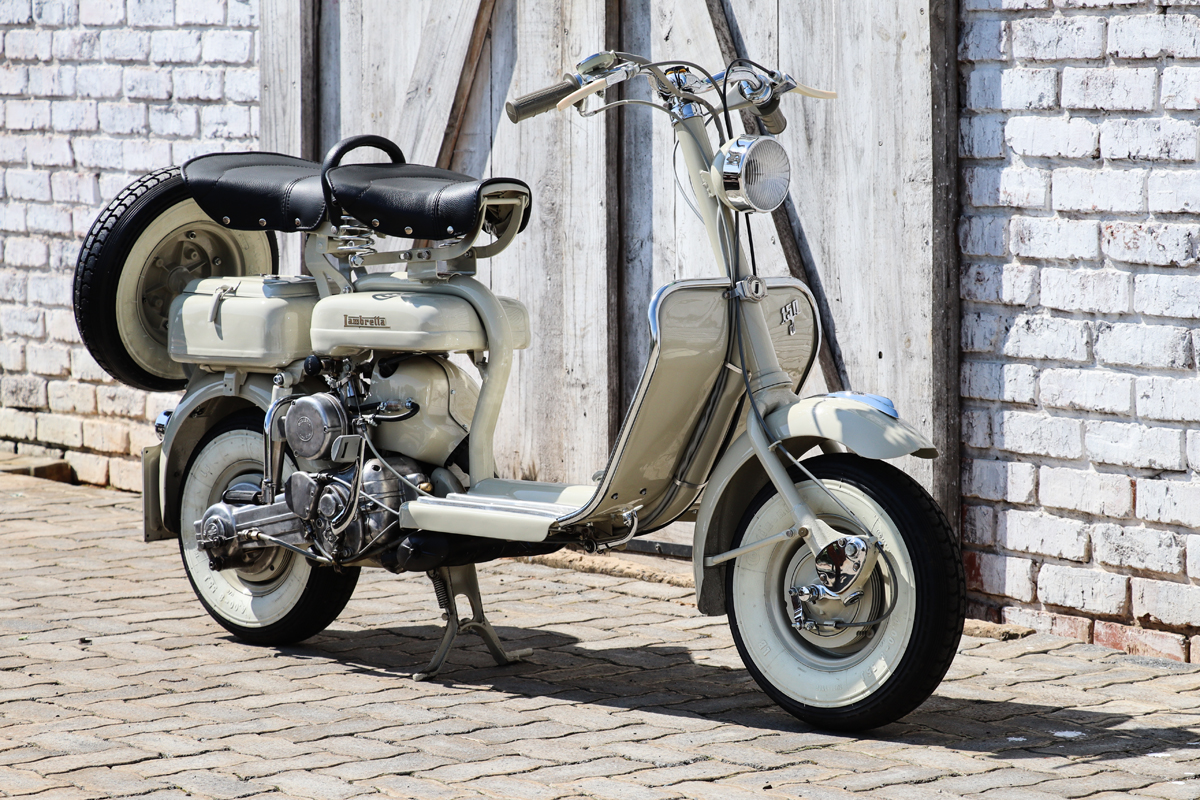
Innocenti was acquired by British Leyland in the late 60s and they in turn saw their export market in India and the Far East came under pressure from the flood of small Japanese motorcycles flooding those markets. Lambretta’s were built under licence in various countries across the globe, with India being at the forefront of scooter production. In 1972 Scooters India Ltd bought the entire Lambretta manufacturing and trademark rights. Innocenti employees set up the factory in Lucknow as all the manuals and machinery instructions were in Italian.
To cut a long story short, Indian production stopped in 1997, and a new entity, Innocenti S.A., known as Lambretta Consortium, based in Lugano Switzerland acquired all rights to the Lambretta brand. Under their guidance, a new range of modern Lambretta’s are manufactured at factories around the world. 125, 200, 300 and 350cc thoroughly modern scooters are now once again in production with four-stroke engines sourced from Taiwan. In recent years Taiwan has established itself as a premier manufacturer of scooter engines, with brands like Kymco and SYM gaining an enviable reputation for performance and reliability, selling their scooters across the globe.

And now for the good news! Corrie Moolman, the owner of the 150 dl which I tested has acquired the rights to import the magnificent range of modern Lambretta’s into SA. Over the next few months, we will review their range and tell you all about them. I have had a glimpse of what is to come, and I can report that they have all the flair for which the brand is famous. More good news is that pricing is going to be extremely competitive. The impish water sprite is once again alive and well!
